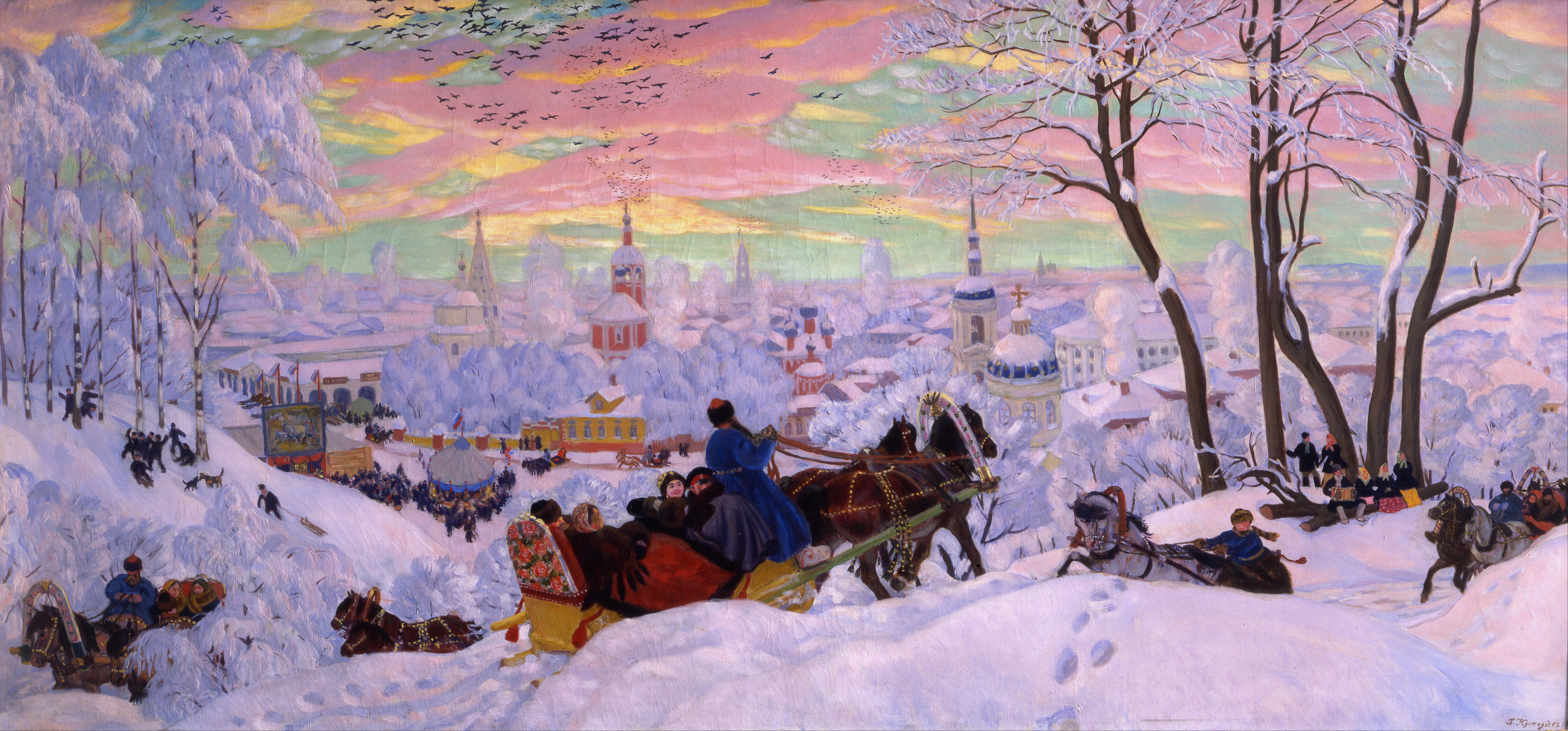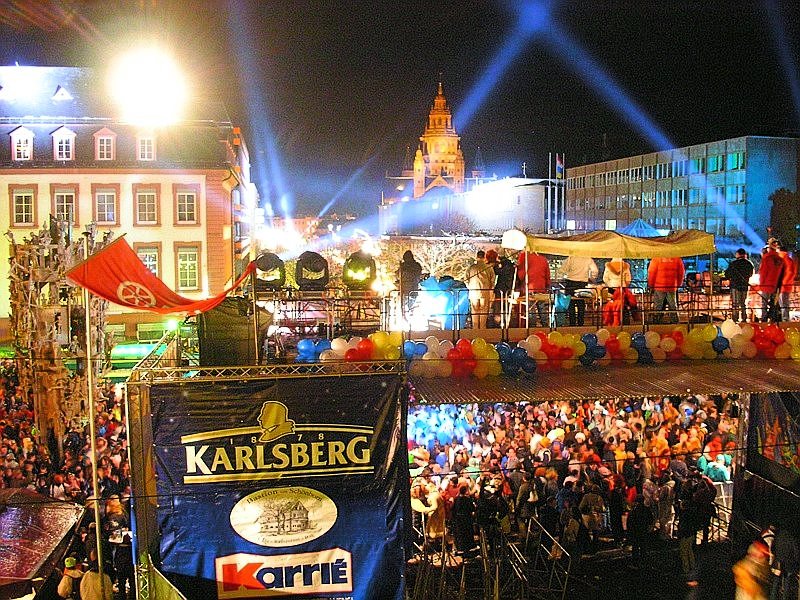|
Fasching
A variety of customs and traditions are associated with Carnival celebrations in the German-speaking countries of Germany, Switzerland and Austria. They can vary considerably from country to country, but also from one small region to another. This is reflected in the various names given to these festivities occurring before Lent. Names In parts of eastern and southern Germany, as well as in Austria, the carnival is called ''Fasching''. In Franconia and Baden-Württemberg as well as some other parts of Germany, the carnival is called ''Fas(t)nacht'', ''Fassenacht'' or ''Fasnet''; in Switzerland, ''Fasnacht''. While Germany's carnival traditions are mostly celebrated in the predominantly Roman Catholic southern and western parts of the country, the Protestant north traditionally knows a festival under the Low Saxon names ''Fastelavend'' , ''Fastelabend'' and ''Fastlaam'' (also spelled ''Fastlom'', ). This name has been imported to Denmark as ''Fastelavn'' and is related to ''Vast ... [...More Info...] [...Related Items...] OR: [Wikipedia] [Google] [Baidu] |
Carnival
Carnival is a Catholic Christian festive season that occurs before the liturgical season of Lent. The main events typically occur during February or early March, during the period historically known as Shrovetide (or Pre-Lent). Carnival typically involves public celebrations, including events such as parades, public street parties and other entertainments, combining some elements of a circus. Elaborate costumes and masks allow people to set aside their everyday individuality and experience a heightened sense of social unity.Bakhtin, Mikhail. 1984. ''Rabelais and his world''. Translated by H. Iswolsky. Bloomington: Indiana University Press. Original edition, ''Tvorchestvo Fransua Rable i narodnaia kul'tura srednevekov'ia i Renessansa'', 1965. Participants often indulge in excessive consumption of alcohol, meat, and other foods that will be forgone during upcoming Lent. Traditionally, butter, milk, and other animal products were not consumed "excessively", rather, their stoc ... [...More Info...] [...Related Items...] OR: [Wikipedia] [Google] [Baidu] |
Swabian-Alemannic Fastnacht
The Swabian-Alemannic Fastnacht, Fasnacht (in Switzerland) or Fasnat/Faschnat (in Vorarlberg) is the pre-Lenten carnival in Alemannic folklore in Switzerland, southern Germany, Alsace and Vorarlberg. Etymology Popular etymology often links ''Fastnacht'' (in Mainz also ''Fassenacht'', in Switzerland ''Fasnacht'', in Swabia ''Fasnet'', ''Fasent'') with ''fasten'' ("to fast") – allegedly from celebrations on the eve preceding fasting. In the beginning of the 20th century it was a common assumption that the tradition had its roots in pre-Christian ritual. Comparison of dialect variants, however, yields an Old High German ''*fasanaht'', with an element ''fasa-'' of unclear meaning. A likely derivation looked to Proto-Indo-European ' "purify" (cognate to '' pava-mana''), or alternatively to Middle High German ''vaselen'' "prosper, bud", and interpreted the festival as a fertility rite. Historians around Werner Mezger refuted those theories, and showed that the name derives from '' ... [...More Info...] [...Related Items...] OR: [Wikipedia] [Google] [Baidu] |
Rosenmontag
( en, Rose Monday) is the highlight of the German (carnival), and takes place on the Shrove Monday before Ash Wednesday, the beginning of Lent. Mardi Gras, though celebrated on Fat Tuesday, is a similar event. is celebrated in German-speaking countries, including Germany, Austria, Switzerland and Belgium (Eupen, Kelmis), but most heavily in the carnival strongholds which include the Rhineland, especially in Cologne, Bonn, Düsseldorf, Aachen and Mainz. In contrast to Germany, in Austria, the highlight of the carnival is not , but Shrove Tuesday. The name for the carnival comes from the German dialect word meaning "frolic" and meaning Monday. Overview The begins at 11 minutes past the eleventh hour on 11 November and the "street carnival" starts on the Thursday before , which is known as ("women's carnival", Fat Thursday). is prevalent in Roman Catholic areas and is a continuation of the old Roman traditions of slaves and servants being master for a day. derives from the ... [...More Info...] [...Related Items...] OR: [Wikipedia] [Google] [Baidu] |
Shrove Tuesday
Shrove Tuesday is the day before Ash Wednesday (the first day of Lent), observed in many Christian countries through participating in confession and absolution, the ritual burning of the previous year's Holy Week palms, finalizing one's Lenten sacrifice, as well as eating pancakes and other sweets. Shrove Tuesday is observed by many Christians, including Anglicans, Lutherans, Methodists and Roman Catholics, who "make a special point of self-examination, of considering what wrongs they need to repent, and what amendments of life or areas of spiritual growth they especially need to ask God's help in dealing with." This moveable feast is determined by Easter. The expression "Shrove Tuesday" comes from the word ''shrive'', meaning "absolve". As this is the last day of the Christian liturgical season historically known as Shrovetide, before the penitential season of Lent, related popular practices, such as indulging in food that one might give up as their Lenten sacrifice for the u ... [...More Info...] [...Related Items...] OR: [Wikipedia] [Google] [Baidu] |
Mainz Carnival
The Mainz Carnival (''Mainzer Fastnacht'', ''"Määnzer Fassenacht" or "Meenzer Fassenacht"'') is a months-long citywide carnival celebration in Mainz, Germany that traditionally begins on 11 November but culminates in the days before Ash Wednesday in the spring. It is one of the largest carnival events in Germany and, along with the Cologne and Düsseldorfer carnivals, Mainz is one of the three cities prominent in the rhenish carnival tradition. Aside from the celebrations, parades, and jollity which are typical of carnival traditions in many countries, the Mainz carnival has an unusual emphasis on political and literary humor and commentary. History Early beginnings The tradition of carnival can be traced back to the Christian moveable feasts, where Ash Wednesday is the first day of Lent and occurs forty-six days (forty days not counting Sundays) before Easter. The first written records of the tradition date from the 13th and 14th century. By that time, regulations against ... [...More Info...] [...Related Items...] OR: [Wikipedia] [Google] [Baidu] |
Prussia
Prussia, , Old Prussian: ''Prūsa'' or ''Prūsija'' was a German state on the southeast coast of the Baltic Sea. It formed the German Empire under Prussian rule when it united the German states in 1871. It was ''de facto'' dissolved by an emergency decree transferring powers of the Prussian government to German Chancellor Franz von Papen in 1932 and ''de jure'' by an Allied decree in 1947. For centuries, the House of Hohenzollern ruled Prussia, expanding its size with the Prussian Army. Prussia, with its capital at Königsberg and then, when it became the Kingdom of Prussia in 1701, Berlin, decisively shaped the history of Germany. In 1871, Prussian Minister-President Otto von Bismarck united most German principalities into the German Empire under his leadership, although this was considered to be a "Lesser Germany" because Austria and Switzerland were not included. In November 1918, the monarchies were abolished and the nobility lost its political power during the Ger ... [...More Info...] [...Related Items...] OR: [Wikipedia] [Google] [Baidu] |
Cologne Carnival
The Cologne Carnival (german: Kölner Karneval) is a carnival that takes place every year in Cologne, Germany. Traditionally, the "fifth season" (carnival season) is declared open at 11 minutes past 11 on the 11th of the 11th month November. The Carnival spirit is then temporarily suspended during the Advent and Christmas period, and picks up again in earnest after 6 January, Epiphany, in the New Year. The time of merrymaking in the streets is officially declared open at downtown square "Alter Markt" on the Thursday before the beginning of Lent. Street carnival, a week-long street festival, also called " the crazy days", takes place between Fat Thursday (') and Ash Wednesday ('). The highlight of carnival is Rose Monday ('), two days before Ash Wednesday. All through these days, Cologne folks go out masqueraded. The typical greeting during the festival is ', a Kölsch phrase. Dreigestirn Every year three people (the or triumvirate) are granted the titles of , , and (maiden, ... [...More Info...] [...Related Items...] OR: [Wikipedia] [Google] [Baidu] |
Rhineland-Palatinate
Rhineland-Palatinate ( , ; german: link=no, Rheinland-Pfalz ; lb, Rheinland-Pfalz ; pfl, Rhoilond-Palz) is a western state of Germany. It covers and has about 4.05 million residents. It is the ninth largest and sixth most populous of the sixteen states. Mainz is the capital and largest city. Other cities are Ludwigshafen am Rhein, Koblenz, Trier, Kaiserslautern, Worms and Neuwied. It is bordered by North Rhine-Westphalia, Saarland, Baden-Württemberg and Hesse and by the countries France, Luxembourg and Belgium. Rhineland-Palatinate was established in 1946 after World War II, from parts of the former states of Prussia (part of its Rhineland and Nassau provinces), Hesse (Rhenish Hesse) and Bavaria (its former outlying Palatinate kreis or district), by the French military administration in Allied-occupied Germany. Rhineland-Palatinate became part of the Federal Republic of Germany in 1949 and shared the country's only border with the Saar Protectorate until the latter wa ... [...More Info...] [...Related Items...] OR: [Wikipedia] [Google] [Baidu] |
North Rhine-Westphalia
North Rhine-Westphalia (german: Nordrhein-Westfalen, ; li, Noordrien-Wesfale ; nds, Noordrhien-Westfalen; ksh, Noodrhing-Wäßßfaale), commonly shortened to NRW (), is a States of Germany, state (''Land'') in Western Germany. With more than 18 million inhabitants, it is the List of German states by population, most populous state of Germany. Apart from the city-states, it is also the List of German states by population density, most densely populated state in Germany. Covering an area of , it is the List of German states by area, fourth-largest German state by size. North Rhine-Westphalia features 30 of the 81 German municipalities with over 100,000 inhabitants, including Cologne (over 1 million), the state capital Düsseldorf, Dortmund and Essen (all about 600,000 inhabitants) and other cities predominantly located in the Rhine-Ruhr metropolitan area, the largest urban area in Germany and the fourth-largest on the European continent. The location of the Rhine-Ruhr at the h ... [...More Info...] [...Related Items...] OR: [Wikipedia] [Google] [Baidu] |
Vorarlberg
Vorarlberg ( , ; gsw, label=Vorarlbergisch, Vorarlbearg, , or ) is the westernmost States of Austria, state () of Austria. It has the second-smallest geographical area after Vienna and, although it also has the second-smallest population, it is the state with the second-highest population density (also after Vienna). It borders three countries: Germany (Bavaria and Baden-Württemberg via Lake Constance), Switzerland (Grisons and Canton of St. Gallen, St. Gallen), and Liechtenstein. The only Austrian state that shares a border with Vorarlberg is Tyrol (state), Tyrol, to the east. The capital of Vorarlberg is Bregenz (29,698 inhabitants), although Dornbirn (49,845 inhabitants) and Feldkirch, Vorarlberg, Feldkirch (34,192 inhabitants) have List of cities and towns in Austria, larger populations. Vorarlberg is also the only state in Austria in which the local dialect is not Austro-Bavarian dialects, Austro-Bavarian, but rather an Alemannic dialects, Alemannic dialect; it therefore ha ... [...More Info...] [...Related Items...] OR: [Wikipedia] [Google] [Baidu] |
Alsace
Alsace (, ; ; Low Alemannic German/ gsw-FR, Elsàss ; german: Elsass ; la, Alsatia) is a cultural region and a territorial collectivity in eastern France, on the west bank of the upper Rhine next to Germany and Switzerland. In 2020, it had a population of 1,898,533. Alsatian culture is characterized by a blend of Germanic and French influences. Until 1871, Alsace included the area now known as the Territoire de Belfort, which formed its southernmost part. From 1982 to 2016, Alsace was the smallest administrative ''région'' in metropolitan France, consisting of the Bas-Rhin and Haut-Rhin departments. Territorial reform passed by the French Parliament in 2014 resulted in the merger of the Alsace administrative region with Champagne-Ardenne and Lorraine to form Grand Est. On 1 January 2021, the departments of Bas-Rhin and Haut-Rhin merged into the new European Collectivity of Alsace but remained part of the region Grand Est. Alsatian is an Alemannic dialect closely related ... [...More Info...] [...Related Items...] OR: [Wikipedia] [Google] [Baidu] |







.jpg)
